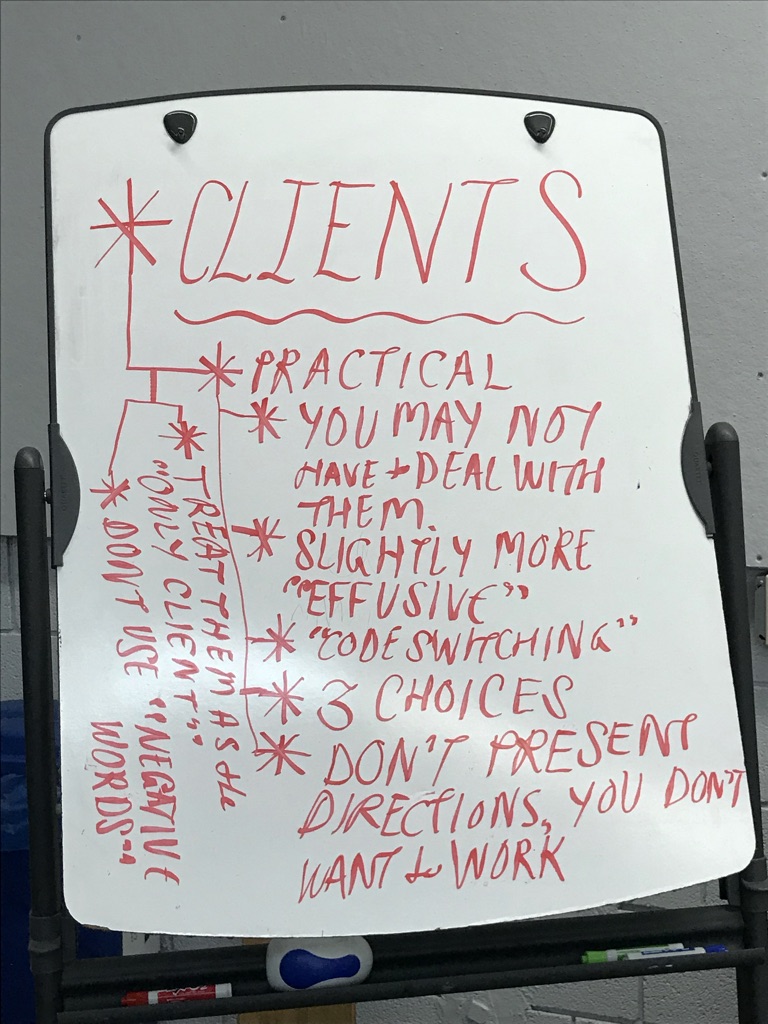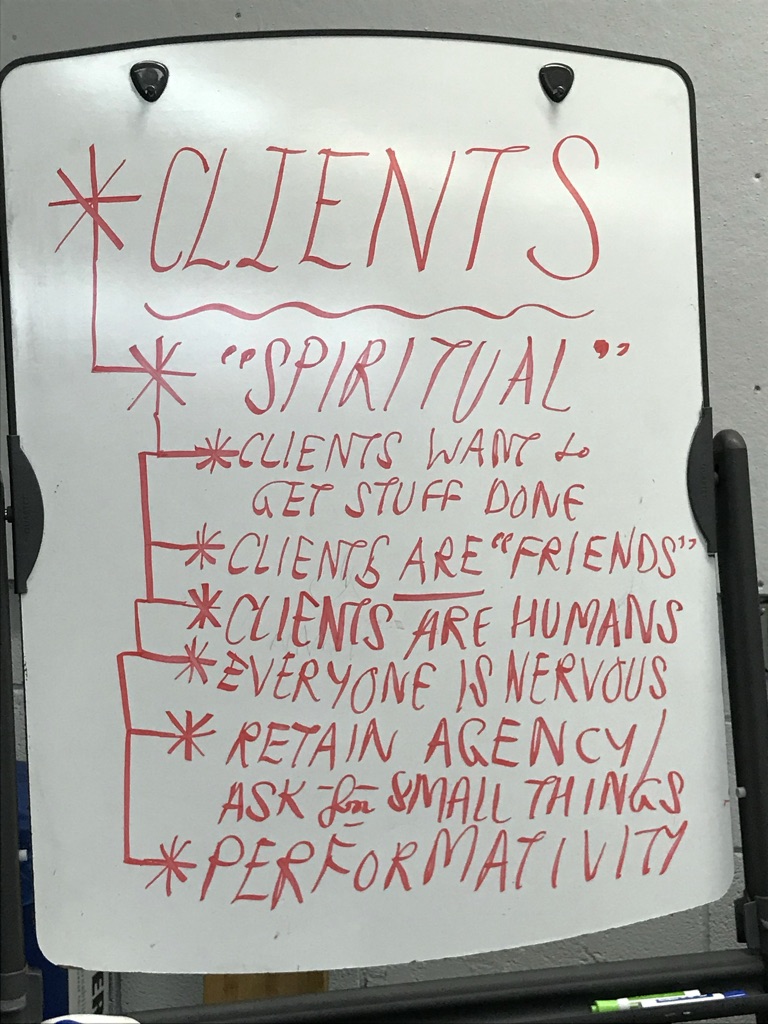Fall 2022 ︎︎︎ SUNY Purchase College ︎︎︎ (DES4100) Community Design
Spiel: Clients
Practical Advice
(direct steps to work with clients)-
You may not have them, or have to deal with them if you work in a studio. That being said this will be applicable if you have people who are above you, like art directors or creative directors.
- You can be yourself but you may have to be more expressive or “effusive,” this may involve “code switching” to a more “business-appropriate” version of yourself.
- Whenever you deal with clients be ready to present 3 directions. For whatever reason this is a magic number. 2 often feels like too few and extends the project artificially, 4 can start to becoming confusing.
- When you do this, make sure that you show work you want to work on. You may be working on a project for a several months and a client may choose the direction you are least enthusiastic about.
- Treat your clients as if they are the only thing you are working on. That is to say don’t mention the minutae of other things that you have going on or present any excuses if you can’t get things done. Request more time before it becomes an issue and be clear about what you need timewise. If you’re unable to meet deadlines consider what may be unrealistic about your timelines or is not working in your process.
- Don’t use “negative words.” For example, when asking for feedback, don’t mention “questions, comments or concerns”, eventhough this is a common turn of phrase. Try to subtextually, create the impression you are moving towards a final decision without being pushy.
“Spiritual” Advice
(Ways to retain focus and agency)- Clients want to get stuff done. This may not seem true if they are asking for increasingly small feedback but they may have money, reputation, or other things on the line they may not be able to elucidate to you. You may also need to refocus your client in this respect.
- Clients are “friends.” That is to say, unlike family, you choose your friends. You and a client agree to enter into a relationship, as such you can lose them and you must respect this relationship. Although I meant this as a metaphor, they can be your actual friends, and you will inevitably form positive, friendly relationships with some clients.
- Clients are humans. Humans have flaws, personalities, and eccentricities. Sometimes these are fun, and sometimes they are infuriating. Be ready to talk through these moments and don’t let yourself suffer in silence.
- Everyone is nervous. You are looking to eventually make money, and create good work. Your client is risking their money, and they are looking to receive good work. Both sides of the equation involve risk in different ways at different times. This may make you behave in a certain way, or you behave in a certain way, for better or worse. Be aware of this and try to form relationships with clients where you can be candid about what is and isn’t working for you.
- Retain agency in small things. Sometimes asking for small things (a cat in the background, a more specific shade of lavender) are often not very important to the client but can help you feel like you have more involvement in a project especially if you are getting lost in minutae.
- Performativity. Dealing with clients, in being professional or dealing with someone who is not in a creative field, you may feel unlike yourself. Try to use these moments to have fun with the process and embrace the performativity as an exercise and about being insincere.

